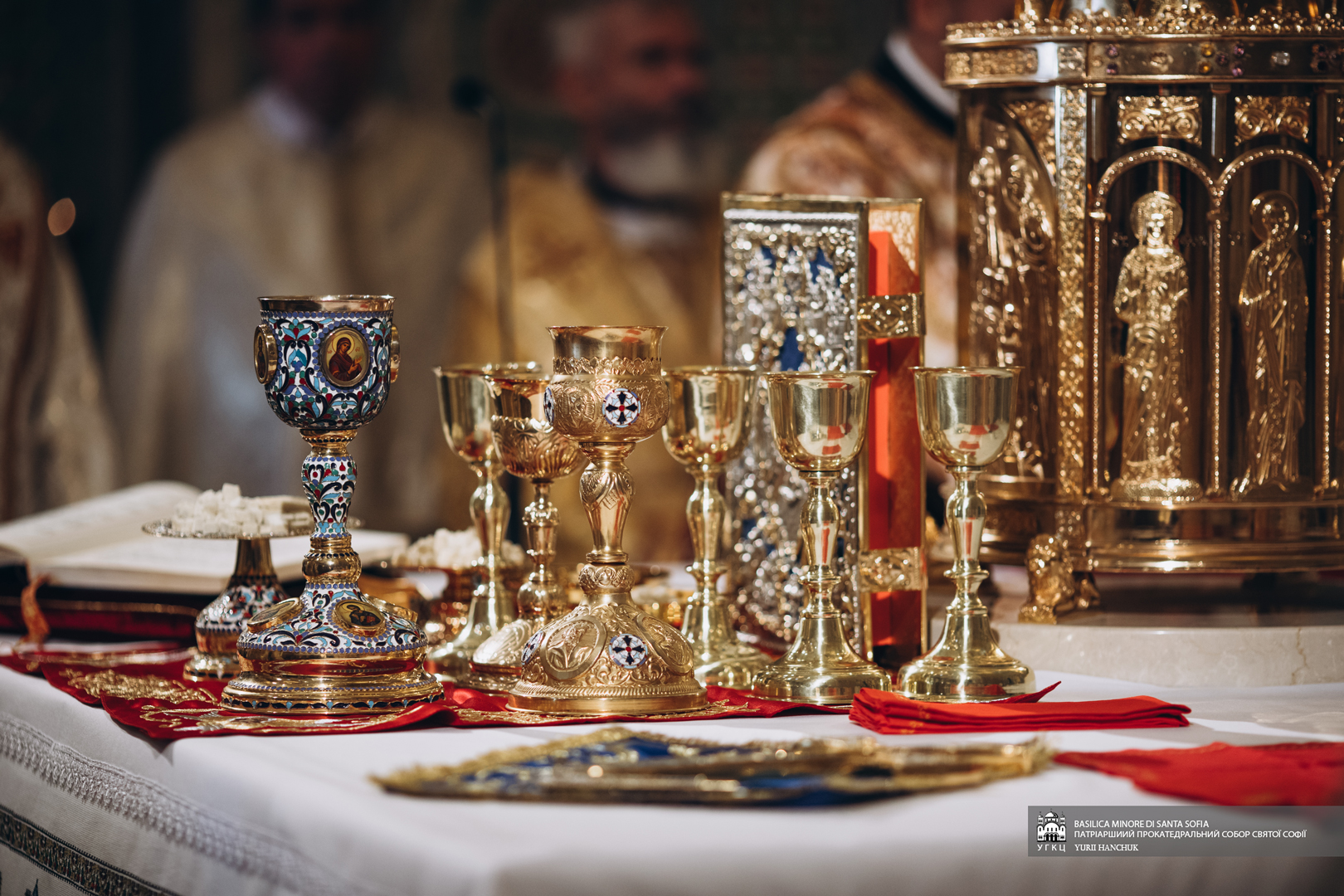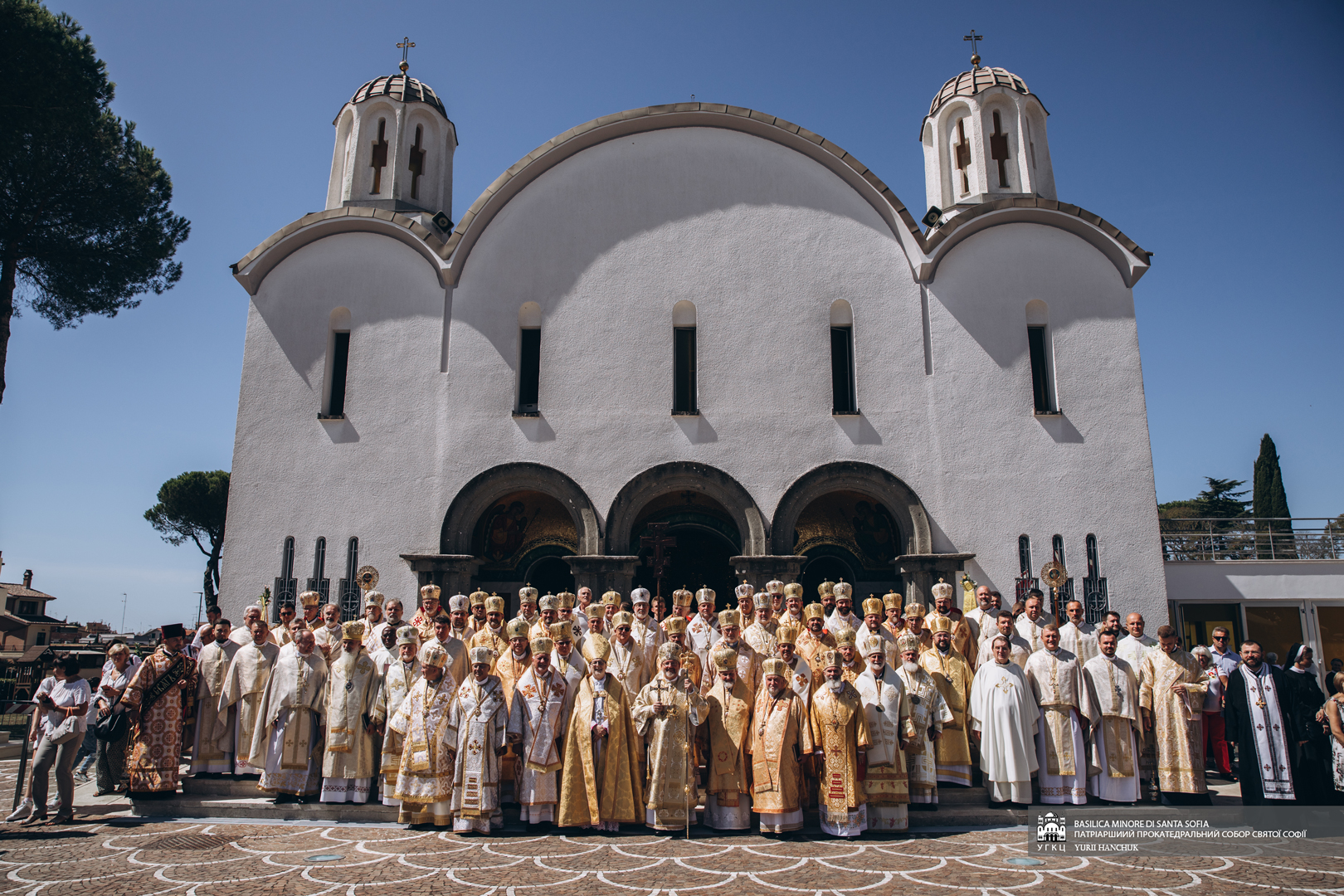The Niceno-Constantinopolitan Symbol of Faith, often referred to as the Nicene Creed, stands as a timeless testament to the essential beliefs of the Ukrainian Catholic Church. Within its concise structure, this creed encapsulates the four distinctive signs that characterize the Church of Christ: oneness, holiness, catholicity, and apostolicity. These four pillars of the Church form the foundation of Christian doctrine and practice, revealing the identity and purpose of the Church in the world. In this article, we will explore each of these pillars in-depth and understand their significance in the life of the Church.
The Church is One
The oneness of the Church mirrors the oneness of God Himself. As stated in Ephesians 4:6, “There is one God and Father of all.” Jesus, the cornerstone of the Church, declared, “I will build my church” (Matthew 16:18). This unity finds its source in the Most Holy Trinity—Father, Son, and Holy Spirit—and in the sacrament of baptism, as expressed in Ephesians 4:5: “one faith, one baptism.”
The Church’s unity is not merely a superficial bond but a profound spiritual reality. Every believer, regardless of nationality, ethnicity, or background, becomes a member of the one Body of Christ. Romans 12:5 reminds us, “So we, who are many, are one body in Christ, and individually we are members one of another.” This unity foreshadows the unified People of God that will be fully realized in the Kingdom of God.
Within this oneness, self-governing Churches play a crucial role. These local Churches demonstrate the unity of the Church through hierarchical structures centered around the bishop. Ministries, whether presbyteral, diaconal, monastic, or lay, work harmoniously to promote the growth of the body in love (Ephesians 4:16). The bishop, guided by the Holy Spirit, discerns the gifts of the faithful, calling them to serve within the Church.
Furthermore, the unity of faith among self-governing Churches is reaffirmed through the common profession of doctrinal teachings found in the Ecumenical Councils. The Church’s one faith is the wellspring from which the faithful draw their participation in the Holy Mysteries, particularly in the Eucharist, where believers become one body in communion.

The Church is Holy
God’s holiness serves as the source of holiness for the Church. In Hosea 11:9, God declares, “For I am God and no mortal, the Holy One in your midst.” Leviticus 11:44 reinforces this call to holiness: “For I am the Lord your God; sanctify yourselves therefore, and be holy, for I am holy.”
Christ’s profound love for the Church is exemplified in Ephesians 5:25-27, where it is expressed that He gave Himself up to make the Church holy. The Church affirms its holiness through liturgy, inviting the faithful with the words, “The holy Things for the holy.” It is within the Church that believers are called to grow in holiness through the grace of the Holy Spirit.
The Holy Spirit leads believers on the path of holiness, offering the grace of repentance and divinization through the Holy Mysteries. The Church’s sanctity is evident in its capacity to embrace sinners while continually purifying itself. As members of the Church grow in holiness, they become part of the transformative work of the Lord, directing all of creation toward the “new earth” (Revelation 21:1).
The Church is Catholic
The term “Catholic” derives from the Greek word “katholike,” meaning according to the whole or fullness. The Church embodies catholicity when it gathers the community of believers around the Eucharistic table. As the faithful partake of the Eucharist, they become one Body of Christ, a unity that transcends individuality and unites them with each other and with Christ.
The bishop, often referred to as the “vicar of Christ,” presides over the Eucharistic gathering. He holds a dual role as both the leader of the liturgical assembly and an icon of God for the community. This primacy of the bishop is rooted in love and reflects Christ’s own love for His Church.
Moreover, the bishop’s role extends beyond the local community. Through the common faith shared in the Eucharist, every local Church enters into communion with others, forming a self-governing Church. The Church of Rome holds a special place in this structure, as the Pope of Rome, the successor of the apostle Peter, presides over it. His ministry serves to preserve the purity and immutability of divine teaching, ensuring the unity of the Church.
The highest expression of the Church’s catholicity is seen in the Ecumenical Councils, where chief shepherds of the Church bear witness to the faith and life of the entrusted Churches. Christ’s commission to Peter to strengthen his brothers (Luke 22:32) finds fulfillment in the ministry of the Bishop of Rome, who convenes these councils, approves their decisions, and upholds the infallible faith-teaching of the Church.

The Church is Apostolic
The apostolicity of the Church traces its roots back to the twelve apostles chosen by Christ. These apostles formed the foundation of the Church, sent into the world to proclaim the Gospel. Mark 3:13-14 tells us, “He appointed twelve, whom he also named apostles, to be with him, and to be sent out to proclaim the message.”
This apostolic ministry endures through the Church hierarchy and the mission of all believers. The Church, scattered throughout the world, faithfully preserves the apostolic faith, proclaiming it with unity and harmony. This unity is expressed in the Symbol of Faith, where the Church is professed to be apostolic.
The successors of the apostles are the bishops, who pass on the apostolic inheritance of saving grace and true faith through the laying on of hands. As guardians of the faith, bishops are called to teach, sanctify, and shepherd the people of God. The priest, an assistant to the bishop, carries out his apostolic role by leading the Eucharistic community, expressing communion with the bishop, and ministering for the salvation of God’s people.
Deacons, in service to the bishop and his group of priests, attend to the daily needs of the Church communities. Monastics, through a life of prayer and contemplation, contribute to the sanctification of the world. Their spiritual life empowers them to engage in various works of apostolate.
The laity, by virtue of their vocation, engage in temporal affairs, seeking to bring the Church into every aspect of social life. Their role is to work for the sanctification of the world as a leaven, cooperating closely with the Church hierarchy.
In conclusion, the four pillars of the Church—One, Holy, Catholic, and Apostolic—constitute the foundation of Christian faith and practice. These pillars reveal the Church’s identity as a unified, holy, universal, and apostolic community. As we reflect on these pillars, we are reminded of
the Church’s divine origin, its sacred mission, and its call to bring the message of Christ to the world. In living out these core attributes, the Church continues to be a beacon of hope, guiding humanity toward the fullness of the Kingdom of God.

